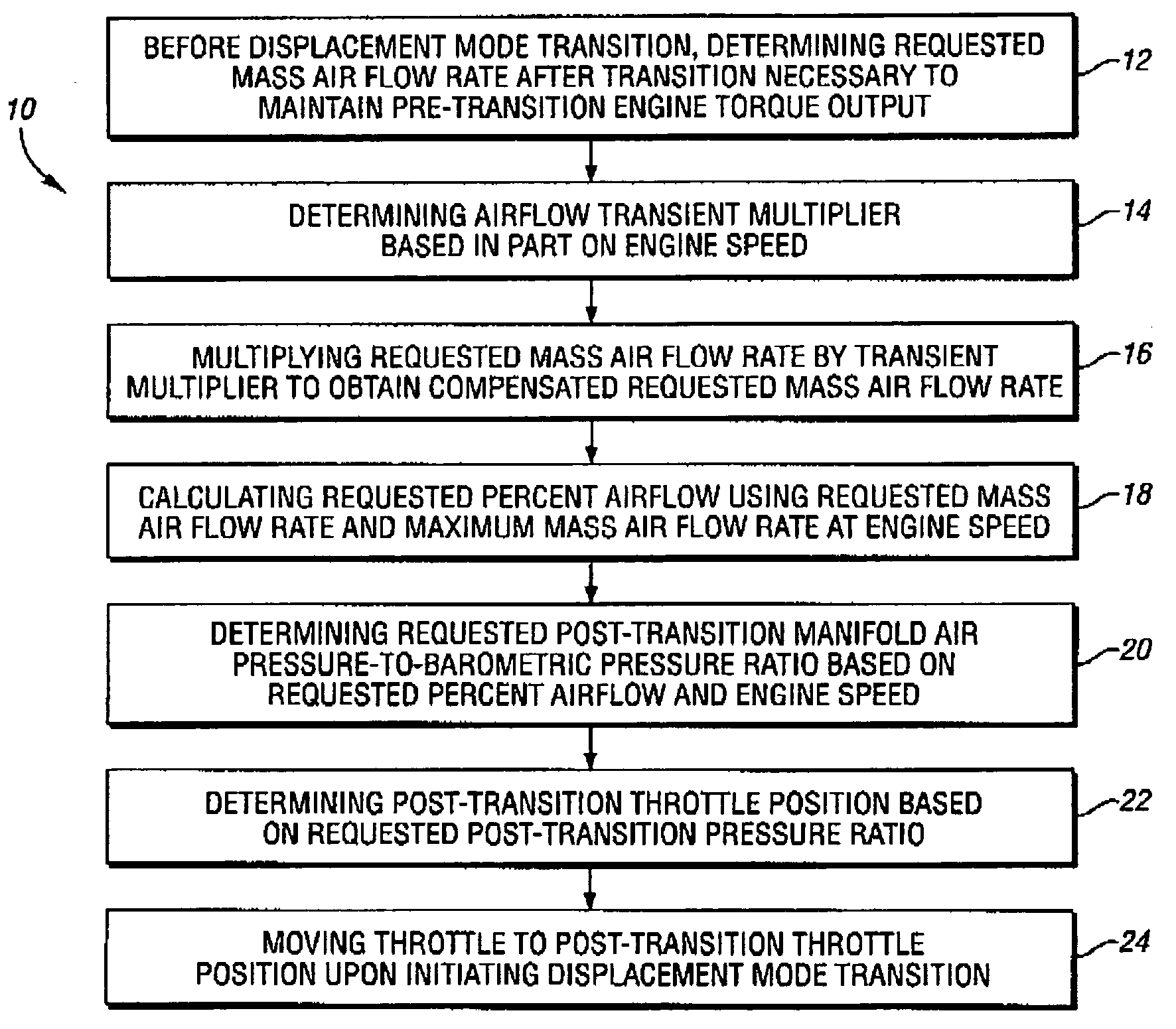Airflow control for multiple-displacement engine during engine displacement transitions
a technology of displacement transition and airflow control, which is applied in the direction of electric control, machines/engines, output power, etc., can solve the problems of reducing compression work, and achieve the effect of reducing engine speed variation and reducing pressur
- Summary
- Abstract
- Description
- Claims
- Application Information
AI Technical Summary
Benefits of technology
Problems solved by technology
Method used
Image
Examples
Embodiment Construction
[0013]A method 10 for controlling airflow in an intake manifold of a multiple-displacement internal combustion engine during an engine displacement mode transition, for example, when transitioning between a full-displacement engine operating mode and a partial-displacement engine operating mode, is generally illustrated in FIG. 1. While the invention contemplates any suitable hydraulic and / or electro-mechanical systems for deactivating the given cylinder, including deactivatable valve train components, an exemplary method is used in controlling airflow in an eight-cylinder engine in which four cylinders are selectively deactivated through use of deactivatable valve lifters as disclosed in U.S. patent publication No. U.S. 2004 / 0244751 A1, the teachings of which are hereby incorporated by reference.
[0014]As seen in FIG. 1, the method 10 generally includes determining, at block 12, before a displacement mode transition, a requested post-transition mass air flow rate that will maintain ...
PUM
 Login to View More
Login to View More Abstract
Description
Claims
Application Information
 Login to View More
Login to View More - R&D
- Intellectual Property
- Life Sciences
- Materials
- Tech Scout
- Unparalleled Data Quality
- Higher Quality Content
- 60% Fewer Hallucinations
Browse by: Latest US Patents, China's latest patents, Technical Efficacy Thesaurus, Application Domain, Technology Topic, Popular Technical Reports.
© 2025 PatSnap. All rights reserved.Legal|Privacy policy|Modern Slavery Act Transparency Statement|Sitemap|About US| Contact US: help@patsnap.com


